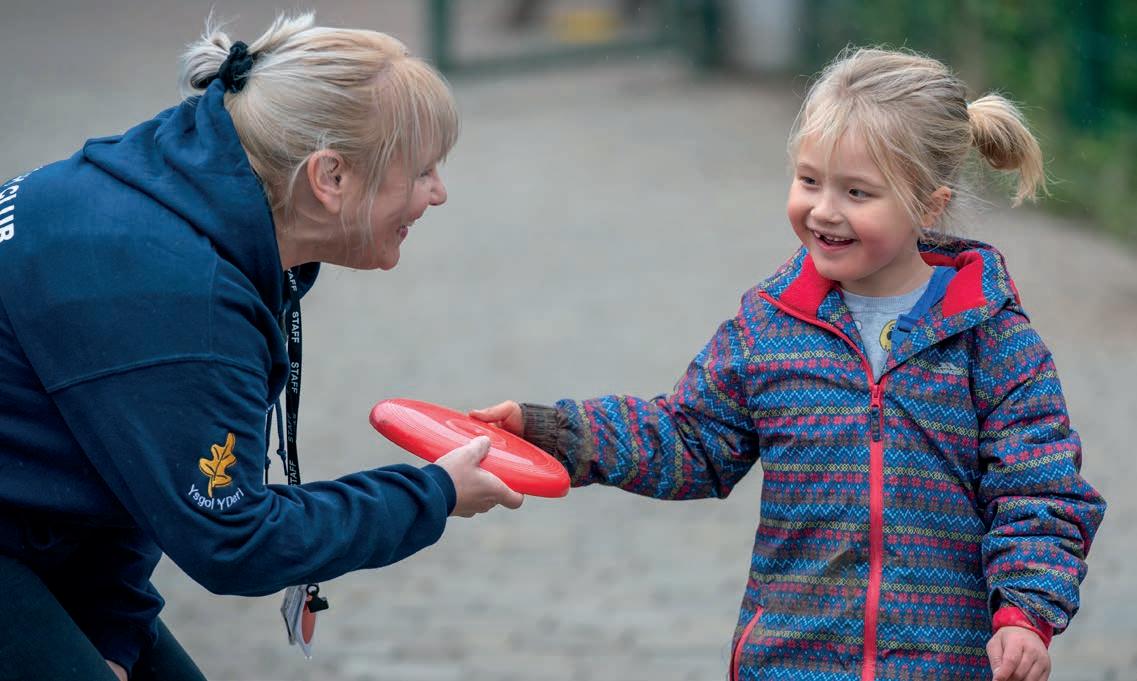
4 minute read
Including disabled children in play provision
In a joint position statement, the Children’s Play Policy Forum and the UK Play Safety Forum call for action to improve play opportunities for disabled children in the UK. Supported by PlayBoard Northern Ireland, Play England, Play Scotland, Play Wales and the Association of Play Industries (API), the statement calls for accessible and inclusive play spaces to uphold every child’s right and need to play.
Published in March 2022, Including Disabled Children in Play Provision states that society has failed in producing enough accessible and inclusive places for children to play within a reasonable distance of their homes. It makes clear that: • a positive, solution-focused attitude is essential to include disabled children • it is possible to make adaptations to increase accessibility and remove barriers to participation by engaging with and prioritising the needs of disabled children and their families • there is an urgent need to change public attitudes • more welcoming spaces must be created which maximise the range of play opportunities offered by the equipment and the environment. Good play provision will make everyone – children and adults of all ages – feel welcome and comfortable in the space, with a wide range of opportunities and experiences for all abilities. Playgrounds and play spaces have huge potential to provide important opportunities for disabled children to be included in their communities, breaking down barriers and building relationships. This brings benefits for nondisabled children too, as they learn through their interactions and engagement with disabled friends and peers.
Advertisement
Sadly, in the UK, many disabled children, disabled parents, and their families are still excluded from local play spaces. Barriers include lack of accessibility, poor understanding of disabled children’s needs and wishes, negative public attitudes and a limited range of play opportunities.
In the statement, the Children’s Play Policy Forum and the UK Play Safety Forum emphasise ‘that everyone can help disabled children and their families feel welcome and included in their local play spaces. Those involved in designing and managing play spaces have a key role to play in leading change, in partnership with disabled children, their families and the local community.’
The statement is accompanied by three case study examples of disabled children’s experiences accessing play opportunities that meet their needs.
Terminology
The forums recommend the following definitions when using the terms ‘accessible’ and ‘inclusive’ in the context of play space. An accessible play space is a space which is barrierfree, allows users access to move around the space and offers participation opportunities for a range of differing abilities. Not every child of every ability will be able to actively use everything within an accessible play space. An inclusive play space provides a barrier-free environment, with supporting infrastructure, which meets the wide and varying play needs of every child. Disabled children and non-disabled children will enjoy high levels of participation opportunities, equally rich in play value. The statement highlights the distinction between ‘accessible’ and ‘inclusive’ play spaces. It acknowledges that, although all play spaces should be accessible, not all play spaces can or will be inclusive. The terms ‘accessible’ and ‘inclusive’ should therefore not be used interchangeably. Confusion around this terminology contributes to a lack of appropriate provision.
Audience
The statement aims to support those involved in play spaces, playgrounds and adventure playgrounds in making these facilities more accessible and inclusive. It is aimed at local authorities, voluntary organisations, housing associations and schools, amongst other play providers – including private providers, such as pubs, holiday parks, camp sites, service stations, theme parks and zoos. ‘Just like any child, all disabled children need and want to play. But for decades, they have been left poorly served. This statement makes a powerful case for change, while acknowledging the challenges. Perhaps most importantly, it sets out a clear vision for new and improved play spaces that will engage children of all abilities.’
Nicola Butler, Chair of the Children’s Play Policy Forum, added:
‘This statement will help build a better understanding of the barriers which keep many disabled children and their families excluded from local play spaces. Overcoming these barriers will bring benefits for non-disabled children too, as they learn through their interactions and engagement with disabled friends and peers.’
Marianne Mannello, Play Wales’ Assistant Director and member of the statement working group, said:
‘When we design spaces that get it right for disabled children, more children can play alongside one another, developing a better understanding of the full range of abilities. These early experiences shape our tolerance and understanding of difference. We hope that this statement supports stakeholders to take reasonable steps to ensure that all children make good use of playgrounds and play spaces, enabling them to benefit from all the positives playing brings to a happy and healthy childhood.’
www.playsafetyforum.org.uk www.childrensplaypolicyforum.org.uk
Key messages
The statement includes five key messages to ensure disabled children are included in play provision:
1. A positive and solution-focused attitude is critical to creating inclusive play space design, based on understanding and prioritising the needs of disabled children and making adaptations to include them. 2. Children and their families want play spaces which include the range of features and facilities they need. 3. Play spaces should offer a balance of high to low challenge opportunities and a good mix of play features. 4. All children deserve to be able to enjoy play spaces that work well for them and their families within a reasonable distance of their home. 5. All play spaces should be developed through community participation, co-design and co-production.









